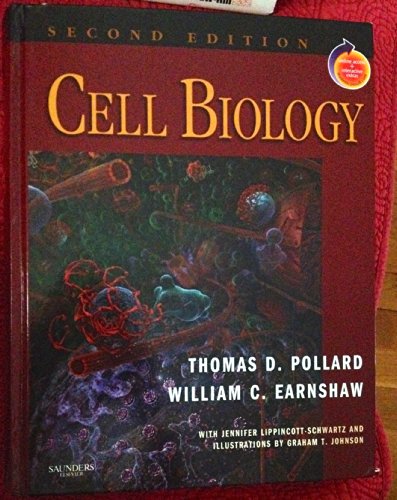A masterful introduction to the cell biology that you need to know! This critically acclaimed textbook offers you a modern and unique approach to the study of cell biology. It emphasizes that cellular structure, function, and dysfunction ultimately result from specific macromolecular interactions. You'll progress from an explanation of the "hardware" of molecules and cells to an understanding of how these structures function in the organism in both healthy and diseased states. The exquisite art program helps you to better visualize molecular structures.
- Covers essential concepts in a more efficient, reader-friendly manner than most other texts on this subject.
- Makes cell biology easier to understand by demonstrating how cellular structure, function, and dysfunction result from specific macromole¬cular interactions.
- Progresses logically from an explanation of the "hardware" of molecules and cells to an understanding of how these structures function in the organism in both healthy and diseased states.
- Helps you to visualize molecular structures and functions with over 1500 remarkable full-color illustrations that present physical structures to scale.
- Explains how molecular and cellular structures evolved in different organisms.
- Shows how molecular changes lead to the development of diseases through numerous Clinical Examples throughout.
- Includes STUDENT CONSULT access at no additional charge, enabling you to consult the textbook online, anywhere you go · perform quick searches · add your own notes and bookmarks · follow Integration Links to related bonus content from other STUDENT CONSULT titles―to help you see the connections between diverse disciplines · test your knowledge with multiple-choice review questions · and more!
- New keystone chapter on the origin and evolution of life on earth - probably the best explanation of evolution for cell biologists available!
- Spectacular new artwork by gifted artist Graham Johnson of the Scripps Research Institute in San Diego. 200 new and 500 revised figures bring his keen insight to Cell Biology illustration and further aid the reader’s understanding
- New chapters and sections on the most dynamic areas of cell biology - Organelles and membrane traffic by Jennifer Lippincott-Schwartz; RNA processing (including RNAi) by David Tollervey., updates on stem cells and DNA Repair
- More readable than ever - improved organisation and an accessible new design increase the focus on understanding concepts and mechanisms
New guide to figures featuring specific organisms and specialised cells paired with a list of all of the figures showing these organisms - gives you an easy review of cellular and molecular mechanisms
New glossary with one-stop definitions of over 1000 of the most important terms in cell biology
Thomas Dean Pollard is a prominent educator, cell biologist and biophysicist whose research focuses on understanding cell motility through the study of actin filaments and myosin motors. He is Sterling Professor of Molecular, Cellular & Developmental Biology and a Professor of Cell Biology and Molecular Biophysics & Biochemistry at Yale University. He was Dean of Yale's Graduate School of Arts and Sciences from 2010 to 2014, and President of the Salk Institute for Biological Studies from 1996 to 2001. Pollard is very active in promoting scientific education and research primarily through two major societies, both of which he is a past President: the American Society for Cell Biology and the Biophysical Society
William Charles Earnshaw is Professor of Chromosome Dynamics at the University of Edinburgh where he has been a Wellcome Trust Principal Research Fellow since 1996. Earnshaw is an elected Fellow of the Royal Society since 2013 for his studies of mitotic chromosome structure and segregation. Before Edinburgh, he was Professor of Cell Biology and Anatomy at Johns Hopkins School of Medicine.
Jennifer Lippincott-Swartz is Group Leader at the Howard Hughes Medical Institute Janelia Research Campus. Her lab uses live cell imaging approaches to analyze the spatio-temporal behaviour and dynamic interactions of molecules in cells with a special focus on neurobiology. Before Janelia, Lippincott-Swartz was a primary investigator and chief of the Section on Organelle Biology in the Cell Biology and Metabolism Branch. Her work there included a collaboration with physicists Eric Betzig and Harald Hess (now group leaders at Janelia), who proposed a new function for the photoactivatable protein. The scientists used the protein to generate photoactivatable fluorophores, or dyes, which enabled them to illuminate different sets of molecules sequentially, creating a microscope image far more detailed than previously possible. The method, called super-resolution microscopy, garnered Betzig the 2014 Nobel Prize in Chemistry.
